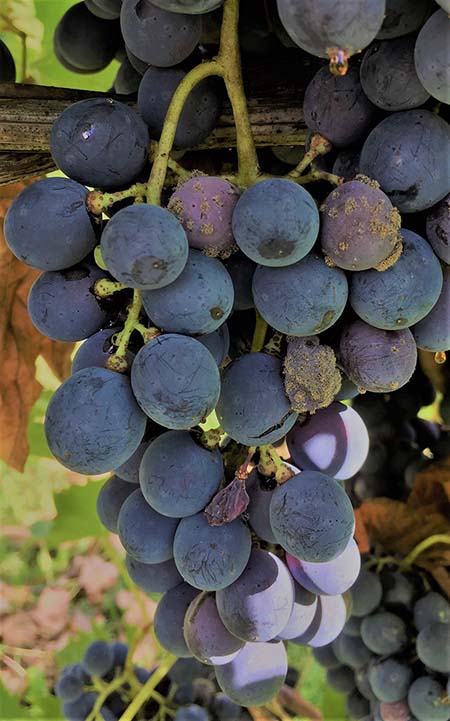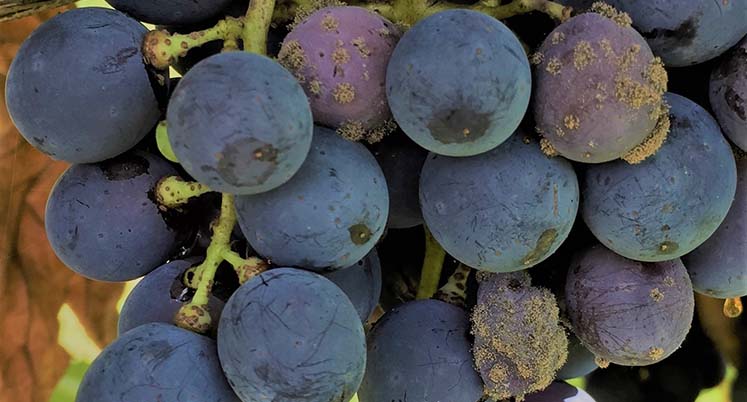A NEW STUDY CHARACTERIZES THE GREY MOLD AGENT FOR FUNGICIDE RESISTANCE IN LOMBARD VINEYARDS
Grey mold, caused by Botrytis cinerea Pers, is one of the most important grapevine diseases. Fungicide-resistance is a key aspect to manage properly this disease and to plan treatments in the field.
In this publication, a research group led by Dr. Silvia Toffolatti, researcher and Prof. Piero Attilio Bianco at DiSAA, has performed an extensive monitoring of fungicide-resistance in 36 vineyards located in Lombardy (Northern Italy). In this publication, 720 strains of B. cinerea were characterized for sensitivity profile to four fungicides: boscalid, fenhexamid, cyprodinil e fludioxonil.
Field populations of B. cinerea showed a relatively low frequency of resistance. In particular, 12% of the strains were resistant to a single fungicide class, whereas only the 0,8% to two fungicide classes contemporaneously. Resistance was associated with mutations in the genes encoding for the target proteins of boscalid and fenhexamid. In addition, two potentially new mutations associated with boscalid resistance were found. Despite the relatively low frequency of resistant strains in the population, the high competitiveness of resistant strains and the inheritance of the resistance character suggest the implementation of anti-resistance strategies, to avoid losses in disease control.

REFERENCE
Toffolatti, S.L, Russo, G., Bezza, D., Bianco, P.A., Massi, F., Marcianò, D., Maddalena, G. (2020). Characterization of fungicide sensitivity profiles of Botrytis cinerea populations sampled in Lombardy (Northern Italy) and implications for resistance management. Pest Management Science [DOI: https://doi.org/10.1002/ps.5757].

